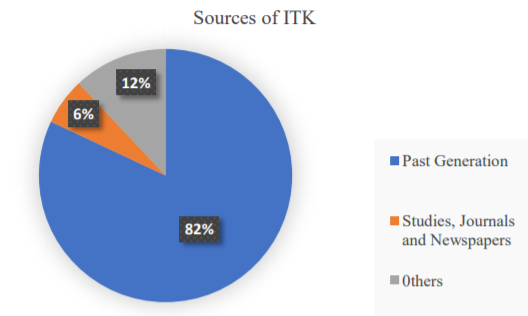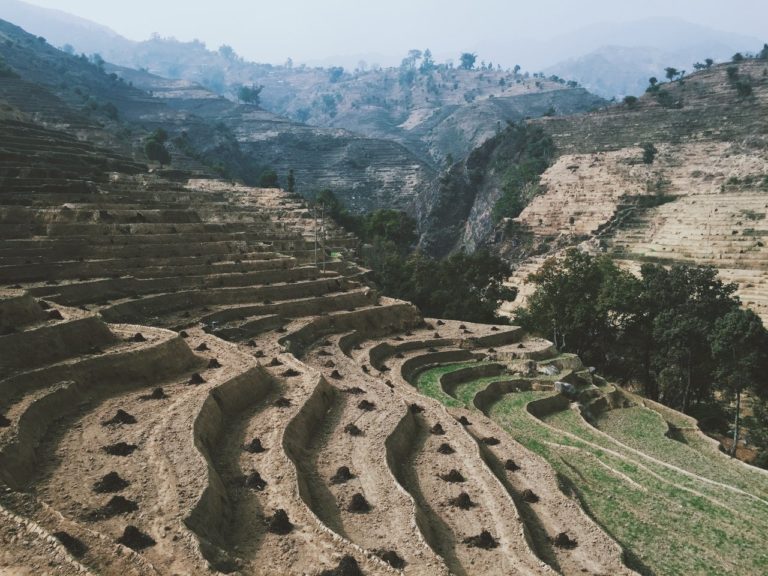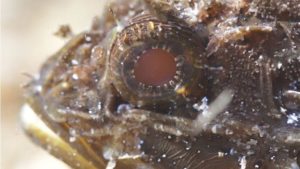Introduction
Indigenous technical knowledge (ITK) is distinctive, traditional and local knowledge prevailing within and developed around specific communities indigenous to a particular area. ITK is sustainable as it has evolved after many years of observation and experience. Traditional farm practices are farmers friendly, climate resilient and uses site – specific crop management. ITK uses local resources that are cost effective and environmental compatible
Study area and design
The survey was carried out in Tanahun, Lamjung and Kaski district of Nepal. Twenty-five respondents from each communities of Magar, Gurung and Newar were selected on the basis of random sampling. Seventy – five respondents were interviewed with a semi structured and open – ended questionnaire between November 2019 to January 2020.
Documentation and statistical analysis
Focus group discussion (FGD), transect walks, observation and key informant interview were qualitative research methods. Secondary data were collected reviewing publications, journals, books and local information
Result and discussion
About 82% of the respondents received knowledge on ITK from their past generations, 12% of respondents received knowledge from other imitation of their neighbors, community leaders, extension agencies while 6% from studies, journals, newspapers and articles. Use of ITK was found to be 85% in subsistence farmers, 60% in semi commercial farmers and 10% among commercial farmers.

ITK used by the indigenous communities of western mid hill of Nepal are:
1. Drying of harvested products like maize cobs hanging in cluster called ‘Suli’ and ‘Thangra’. Keeping maize on the top floor facilitate drying of seeds with kitchen heat. It reduced moisture content and susceptibility of storage insect pest.
2. Dusting of ash to control aphids and ants in potato field. Ash discourages surface feeding insects.
3. Field burning to kill insects or their eggs. It reduces the requirement of pesticides and fertilizers.
4. Foliar spray of cow urine acts as pest repellant. It is used in rice field damaged with snails and slugs as they have molluscicidal effect.
5. Alternate drying and wetting of rice field for few days controls against case worm and leaf folder. The grounded pulp of ‘Khirro’ leaf is used in irrigation channel to control rice stem borer.
6. Trap crops are used in borders as attractants and repellents to protect the main crop. Mustard on border of wheat field, coriander on border of Cole, marigold plants on border of vegetables are planted as trap crops.
7. Seed covered in cow dung before plantation acts as protector. Cow dung extract @2% concentration is effective against ear head bug, leaf folder, stem borer, caterpillars and other chewers in rice.
8. Flooding in rice field suppress weeds. Slicing of bunds and terrace raisers, mixed cropping and inter cropping increase weed control efficiency.
9. Local plants like titepati, banmara, neem and asuro are used in pest management in indigenous communities.
Following table shows the locally available botanical plants used for insect control in the study area.
| Local Name | Common Name | Scientific Name | Insects Controlled |
| Asuro | Malabar Nut | Adhatoda vasica | Grasshopper, Scale insects, Stored pest, Rice pest |
| Bakaino | China Cherry | Melia azedarach | Army worm, Mustard saw-fly, Tobacco caterpillar |
| Banmara | Wild Sage | Lantana camara | Corn weevil, Beetle |
| Bojho | Sweet Flag | Acorus calamus | Ants, Maize weevil |
| Gande | Billy Goat Weed | Aegeratum conizoides | Diamond back moth, Stored grain pest |
| Khirro | Milk Tree | Sapium insigne | Stem borer |
| Nim | Neem | Azadirachta indica | Rice pest, Diamond back moth, Stored grain pests including weevil and grain moth |
| Sayapatri | Marigold | Togetes erecta | Rice green leafhopper, Brown plant hopper, Diamond back moth, Aphid |
| Titepati | Mugwort | Artemisia vulgaris | Corn borer, Leaf mines and galls controls |
| Tulsi | Sweet Basil | Ocimum basilicum | Rice pest, Beetles, Fruit flies |
Constraints in ITK documentation
The knowledge of ITK is accumulated, improved and preserved through personal experience of farmers. They lack scientific validation and detail documentation. They are in threat of extinction due to lacking in corporation in agricultural research and development by researcher and extension worker.
Conclusion
Indigenous technical knowledge (ITK) are valuable traditional skills and tools of the indigenous communities. ITK based practices are used by majority of the subsistence and semi commercial farming community without the knowledge of its scientific rationality. Proper documentation and scientific validation is necessary to apply them in pest management for their future.
Reference to original paper
Naharki, K., & Jaishi, M. (2020). Documentation of Indigenous Technical Knowledge and Their Application in Pest Management in Western Mid Hill of Nepal. SAARC Journal of Agriculture, 18(1), 251-261. https://doi.o rg/10.3329/sja.v18i1.48397
Was this summary helpful? Let us know in the comment section below.
Do not forget to check our other research paper summaries and general blogs.









One Response
Very informative and easy to understand.